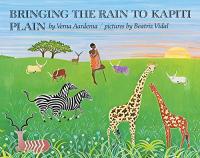Kids easily learn that one thing follows another. Their routines at home provide great examples, and are a good introduction to the concept of sequencing. For example, first we eat dinner, then we take a bath, after that we read stories, and finally we turn out the light.
Helping children sequence also develops their scientific inquiry skills. In order to study or observe changes in something, students must follow along and record changes. The changes happen in a particular order, which kids can document by writing or drawing pictures.
Here are a few activities that families can do that provide children with sequencing practice. As you try these, include the vocabulary of sequencing, which includes words such as first, then, next, finally, or first, second, third, last.
Line up the calendar
Cut or tear out the pages from an old calendar. Mix up the months and hand the stack of pages to your child. Ask your child to order the months from January to December by laying the pages out on the floor. Which month goes first? Then which one? Which month is last?
Create a “sequence of events” story
Start with a sheet of paper divided into 4 large squares. (For older children, you can create more blank sequence squares on the sheet.) Pick an activity your child is familiar with, such as making a peanut butter and jelly sandwich or brushing his teeth. Ask your child to draw the steps of the activity — one step per square in order from beginning to end.
Bring some science into the mix! Download, print, and cut out our 8-page mini-book How Bees Make Honey and work together with your child to put the pages in the correct order. Your child will learn some great vocabulary, too — words such as “proboscis” and “evaporate.”
Use your story time books as models
The books you read together provide a chance to talk about a sequence of events. After you finish a book, ask your child what happened first? And then what happened? How did the book end? To extend this idea, write each event on a separate index card or popsicle stick. Ask your child to put the cards (or sticks) in order.
Providing your child with opportunities to recall events in the correct sequence will help your child as she participates in science exploration and discovery. Understanding sequence also helps your child understand story structure which in turn builds reading comprehension and writing skills.
Recommended children’s books

Bringing the Rain to Kapiti Plain

Every Autumn Comes the Bear

How a House Is Built

Jack’s Garden

The Milk Makers

The Very Hungry Caterpillar
Download this article in Spanish
Subscribe to Growing Readers!
Get our free monthly parent tips — in English and Spanish — delivered right to your inbox!
